The Infiniti QX4 Was the Brand's First Foray Into Luxury SUVs
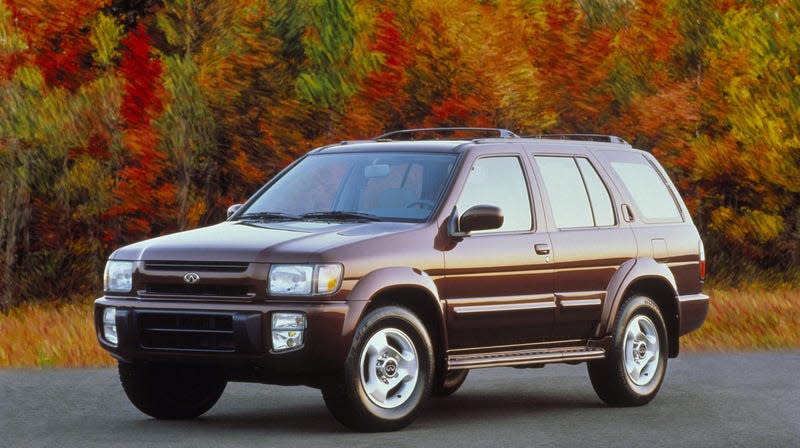
Luxury SUVs and crossovers are big sellers for the brands that offer them here in the U.S. At last count, North American luxury SUV sales accounted for nearly half of the entire globe’s appetite for these vehicles. That market dominance started years ago and built momentum in the 1990s as brands like Acura, Lexus and Infiniti started offering luxed-out SUVs.
In case you missed it:
Years before the Cadillac Escalade and Lincoln Navigator, Acura and Lexus rolled out SUVs that combined rugged off-road capability and luxury into one package. Acura’s first foray into the field was a rebranded Isuzu Trooper called the Acura SLX. Lexus went to its parent Toyota and turned the legendary J80 Land Cruiser into the first-gen LX450. As for Infiniti, the luxury brand went to the only easy SUV option it had: The Nissan Pathfinder.
Read more
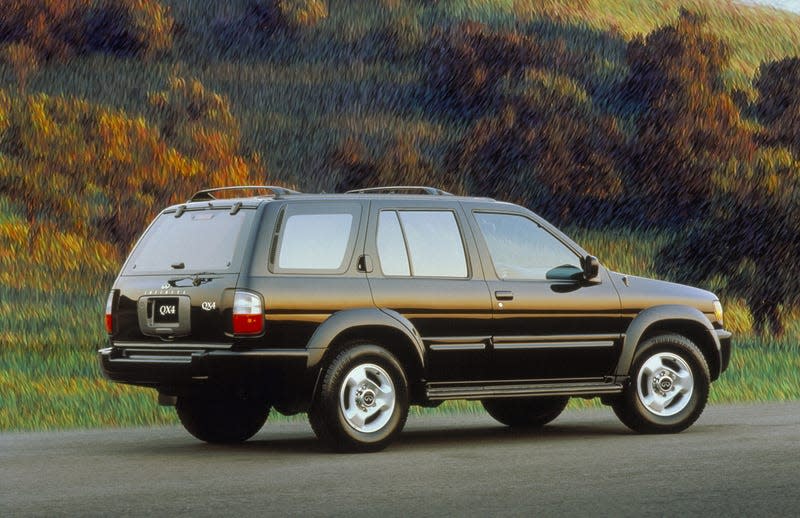
Years before the Pathfinder morphed into the sedan-based crossover we now know, it was a capable body-on frame SUV based on Nissan’s compact pickup truck. This would prove to be the basis for the first and only generation of the Infiniti QX4, built from the second-generation R50 Pathfinder and debuting for the 1996 model year.
And when I say based on, I really mean “badge-engineered.” Aside from slightly different fascias, trim and lights, the QX4 was all but identical to the Pathfinder. The QX4 got a unique hood and front bumper with integrated fog laps and its own rear hatch. All the rest of the sheetmetal, and the powertrains, were shared.
The QX4 was initially powered by a 3.3-liter, 168-horsepower V6 engine mated to a four-speed automatic. What was really unique about the QX4 was its sophisticated four wheel drive system shared with the Nissan GT-R. The QX4 was equipped with a multi-plate clutch in the center differential, which directed engine torque to the front or rear depending on the road conditions. A switch on the instrument panel allowed drifters to switch between 2-wheel, 4-wheel, or automatic all-wheel drive, and the QX4 was surprisingly all-terrain capable for a luxury vehicle.
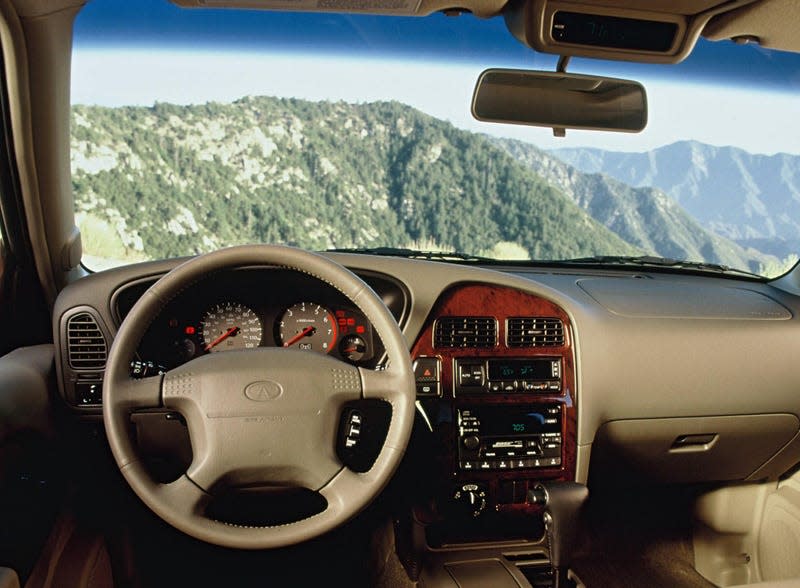
Inside, the QX4 had leather seats, a Bose stereo system and a bit more wood trim than its Pathfinder sibling. But it was lacking in a few areas. Being essentially a Nissan pickup at its heart meant pickup-like ride quality. The back seat was weirdly small, having only 31.8 inches of legroom — less than today’s Infiniti Q60 coupe. It also came with rear drum brakes and unconvincing fake wood, two things that some buyers might have found unacceptable for a luxury brand.
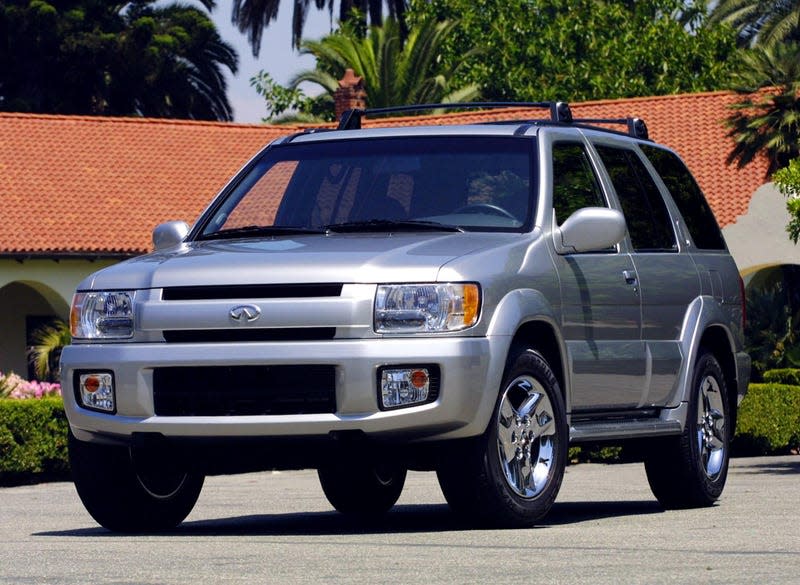
As the years went on, selling the same vehicle as Nissan for more money started to make less and less sense. An update to the QX4 came in 2000 with the addition of a new 3.5-liter V6 with 240 hp, along with other features like xenon headlights. A new rear-drive base model with was introduced as well, but that didn’t help matters. The Pathfinder still made more sense.
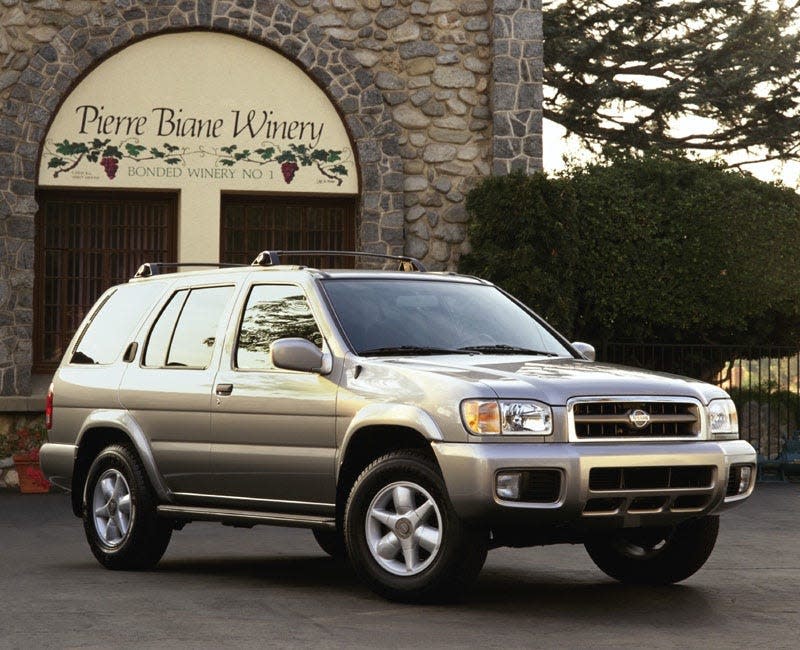
A fully loaded Pathfinder XLE with some of the same luxury features as the QX4, like leather seating and four-wheel drive, started at $33,897. Meanwhile, Infiniti expected buyers to fork over $36,075 for a comparably equipped QX4. Was a bit more fake wood trim, a Bose stereo system and that Infiniti badge worth $2,178 over the Pathfinder?
It’s hard to say, but the QX4 didn’t stick around long. When production ended in 2002, 122,000 QX4s had found buyers.
The QX4 felt a little like a temporary solution, and history bears that out: Just two years after it was canceled, Infiniti had a more competitive luxury SUV in the QX56, based on the Nissan Armada. But you can thank the QX4 for ushering in the era of Infiniti luxury SUVs, and their QX naming scheme.
More from Jalopnik
Sign up for Jalopnik's Newsletter. For the latest news, Facebook, Twitter and Instagram.

 Yahoo Autos
Yahoo Autos 